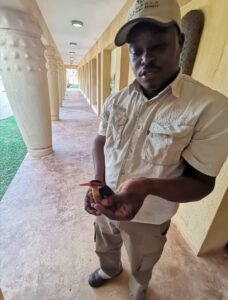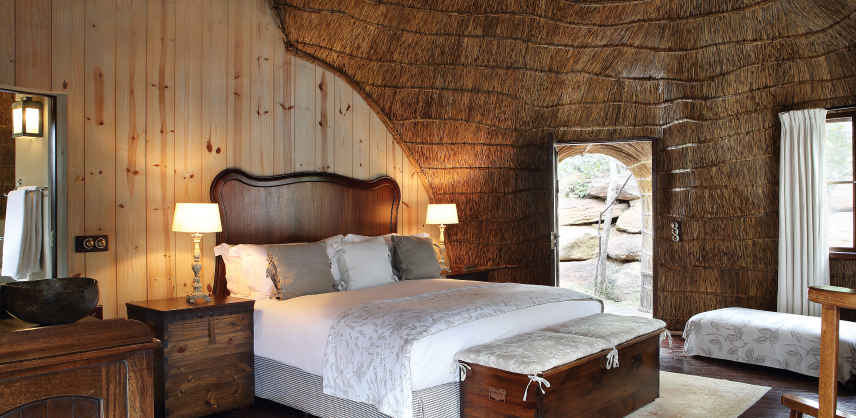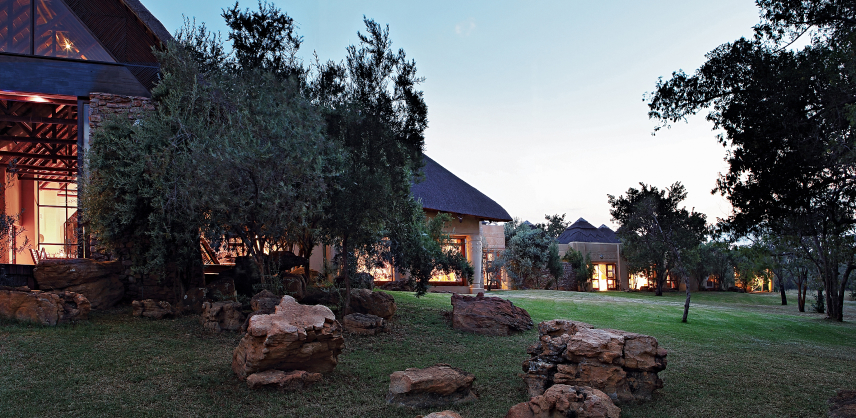Book directly with ease.
We set out on an afternoon game drive on Shambala, and our planned route was to drive close to the big dam in the reserve to view the happenings around the water. I was driving a friendly family that was quite excited to be going on their first Game Drive. As we continued our drive we reached the dam in the central part of the reserve. We looked at all the birds flying across the water and several fish in the water. A Pied Kingfisher was hovering in the air to identify prey species, in the form of small fish in the water. Suddenly it dived down for a catch, and as it hit the water to catch the unlucky fish, it brought our attention to Hippos standing outside the water just beyond the point where it made the catch of the day. It was the first time for my guests to see hippos outside the water, so they were quite excited.
We had a closer look at these interesting creatures, and the guests then mentioned them to be heavy animals but with short legs. We laughed at this interpretation together and wondered how such a large animal could have such short legs to support all that body weight. Hippos can easily weigh up to about 1.5 tons. These mammals are often seen in the water, but to most people’s surprise can only stay under for about 5 minutes. They are usually seen in the shallow parts of the water as they are a bit too heavy to swim, and therefore have to stand/walk on the bottom of the water to move. As we stared on at the intriguing animals, we saw a massive one that crashed into the water, and as it made contact I exclaimed “Makhulu Mvubo!” Makhulu Mvubo is a term used in one of the local African languages which directly translates to ‘Big Hippo’.
The guests were fascinated to see the displays of the Hippos. I then further explained that Hippos don’t actually feed in the water, but instead they come out at night time to feed on grass. The people around me could not believe what I was telling them. Hippos have been the subject of various African folktales and according to a traditional Khoisan story; when the creator assigned each animal its place in nature, the hippo wanted to live in the water. But they were refused this privilege out of fear that they might eat all the fish. After begging and pleading, the hippos were finally allowed to live in the water on the condition that they would eat grass instead of fish. When exiting the water they would have to flick and scatter their dung so that it can be inspected to make sure they were only eating grass.
Territorial male Hippos preside over the stretch of the dam and there is also quite a large group of females and young hippos. During the day they remain cool by staying submerged in the water. Reproduction and childbirth both occur in the water. Hippos are known to be among the most dangerous animals in Africa when they are outside of the water. When the Hippo leaves the water in the evenings or at dusk for feeding, it may happen that they come across people. This is when the Hippo feels unsafe and wants to return to the water. Often the people that they encounter accidentally obstruct their route to the water, and that is when the Hippos feels threatened and charges.
On our Game Drive we had no intention of bothering or obstructing these animals, but instead just enjoyed looking at the Makhulu Mvubo on the embankments of the dam and also splashing around in the water.
Ranger Given Mulaudzi
Shambala Private Game Reserve
Some more about Ranger Given:
"My name is Given Mulaudzi, I am a Venda man and I'm from the Northern parts of Limpopo. I am a Ranger on Shambala Private Game Reserve and I love what I do. Working in the bush, with Nature and teaching others about it is what I enjoy. I've been a Ranger for about 10 years. I spend my time on Shambala by taking guests on Game Drives and Bushwalks, and also getting involved with the conservation on the reserve by monitoring the animals."




